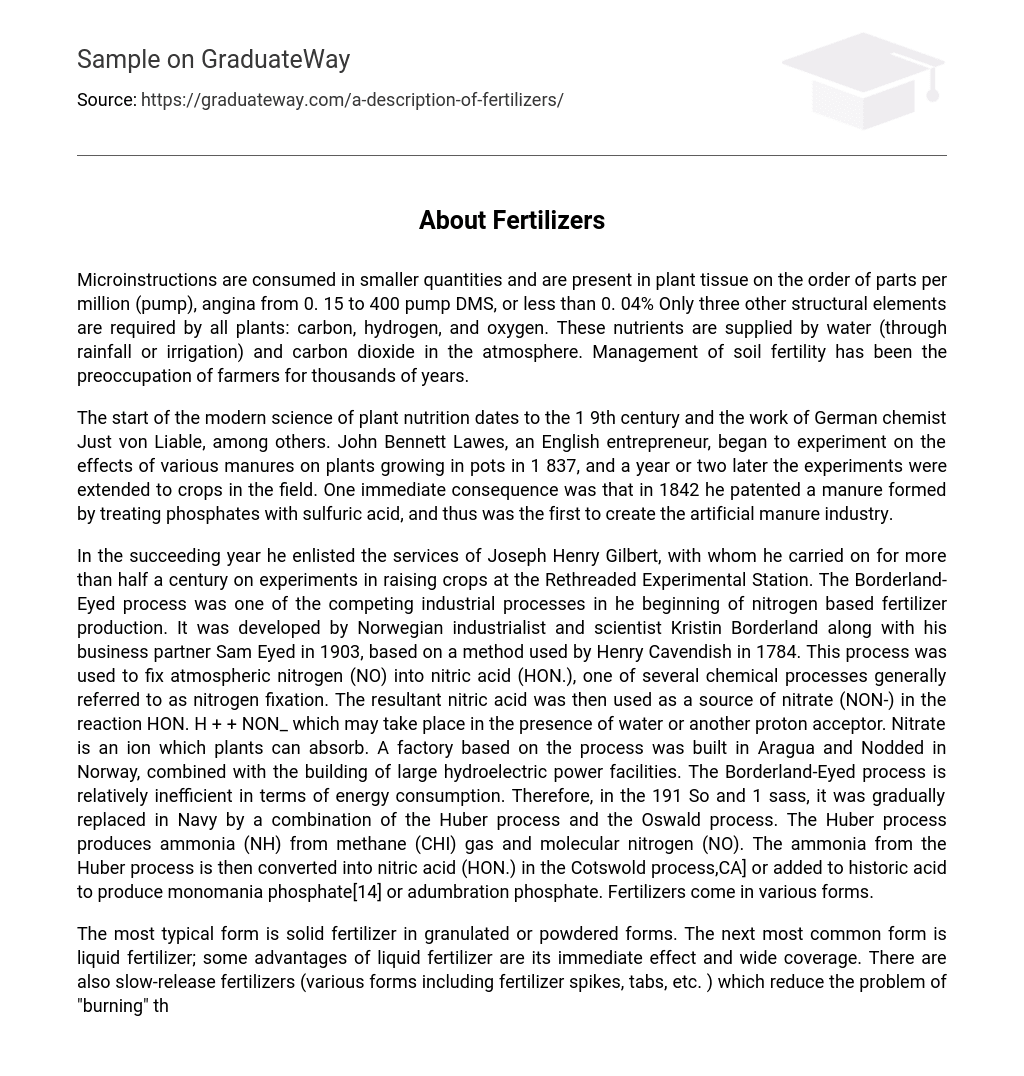Microinstructions are consumed in smaller quantities and are present in plant tissue on the order of parts per million (pump), angina from 0. 15 to 400 pump DMS, or less than 0. 04% Only three other structural elements are required by all plants: carbon, hydrogen, and oxygen. These nutrients are supplied by water (through rainfall or irrigation) and carbon dioxide in the atmosphere. Management of soil fertility has been the preoccupation of farmers for thousands of years.
The start of the modern science of plant nutrition dates to the 1 9th century and the work of German chemist Just von Liable, among others. John Bennett Lawes, an English entrepreneur, began to experiment on the effects of various manures on plants growing in pots in 1 837, and a year or two later the experiments were extended to crops in the field. One immediate consequence was that in 1842 he patented a manure formed by treating phosphates with sulfuric acid, and thus was the first to create the artificial manure industry.
In the succeeding year he enlisted the services of Joseph Henry Gilbert, with whom he carried on for more than half a century on experiments in raising crops at the Rethreaded Experimental Station. The Borderland-Eyed process was one of the competing industrial processes in he beginning of nitrogen based fertilizer production. It was developed by Norwegian industrialist and scientist Kristin Borderland along with his business partner Sam Eyed in 1903, based on a method used by Henry Cavendish in 1784. This process was used to fix atmospheric nitrogen (NO) into nitric acid (HON.), one of several chemical processes generally referred to as nitrogen fixation. The resultant nitric acid was then used as a source of nitrate (NON-) in the reaction HON. H + + NON_ which may take place in the presence of water or another proton acceptor. Nitrate is an ion which plants can absorb. A factory based on the process was built in Aragua and Nodded in Norway, combined with the building of large hydroelectric power facilities. The Borderland-Eyed process is relatively inefficient in terms of energy consumption. Therefore, in the 191 So and 1 sass, it was gradually replaced in Navy by a combination of the Huber process and the Oswald process. The Huber process produces ammonia (NH) from methane (CHI) gas and molecular nitrogen (NO). The ammonia from the Huber process is then converted into nitric acid (HON.) in the Cotswold process,CA] or added to historic acid to produce monomania phosphate[14] or adumbration phosphate. Fertilizers come in various forms.
The most typical form is solid fertilizer in granulated or powdered forms. The next most common form is liquid fertilizer; some advantages of liquid fertilizer are its immediate effect and wide coverage. There are also slow-release fertilizers (various forms including fertilizer spikes, tabs, etc. ) which reduce the problem of “burning” the plants due to excess nitrogen. Polymer coating of fertilizer ingredients gives tablets and pikes a ‘true time-release’ or ‘staged nutrient release’ (SON) of fertilizer nutrients.
More recently, organic fertilizer is on the rise as more people are using environmentally friendly (or ‘green’) products. Although organic fertilizers usually contain a lower concentration of nutrients, their use reduces the risk of nitrogen burn harming the plants. In addition, organic fertilizers such as compost and worm castings are decomposed by microorganisms to form soil organic matter which improves the soil’s structure and moisture- and nutrient-retaining capabilities.





